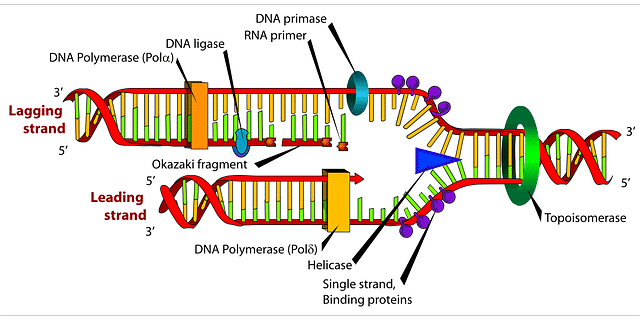A new discovery that challenges long-held dogma in biology shows that mammalian cells can convert RNA sequences back into DNA, a feature found more often in viruses than eukaryotic cells.
Cells contain machinery, like DNA polymerase that adds nucleotide one at a time and makes an identical copy of DNA which goes into new cells during cell division. The same class of machinery also makes RNA that carries information located at central DNA and passes efficiently during protein synthesis.
Previously, scientists thought this flow of information goes in one direction, from DNA to DNA or DNA to RNA, but not from RNA sequences to DNA. For the first time, Thomas Jefferson University researchers provide the evidence that information on RNA sequences can back into DNA, the finding, researchers think, have vast implications affecting many fields of biology.
The study is published in the journal Science Advances recently (Chandramouly et al., 2021).
RNA Sequences to DNA: Studies Contributed to the Findings
Earlier work by Dr. Pomerantz, first author Gurushankar Chandramouly, and other collaborators on a very unusual DNA polymerase called pol-theta have laid the foundation for the current study.
Pol-theta is an error-prone A-family polymerase. The enzyme is very conserved in multicellular eukaryotes, plays various roles in DNA repair, and regulates genome integrity (Beagan et al., 2016).
Also, the enzyme is highly upregulated in several human cancer types. It causes mutation, resists cancer genotoxic therapy, and promotes the survival of cancer cells—which makes pol-theta a promising cancer drug target.
In a series of previous experiments, Pomerantz’s research team noticed that some of pol-theta’s properties were comparable with the properties of other polymerases, such as reverse transcriptase—usually found in viruses. Like pol-theta, HIV reverse transcriptase acts as a DNA polymerase but can also bind RNA and read RNA sequences back into a DNA strand (Menendez-Arias et al., 2017).
The researchers examined pol-theta against HIV reverse transcriptase. They showed that pol-theta could convert RNA into DNA—which HIV reverse transcriptase also did efficiently.
They also observed that pol-theta’s ability to convert RNA to DNA was far better than duplicating DNA to DNA. The process generated fewer errors—converting RNA to DNA than copying DNA to DNA—suggesting the enzyme’s RNA to DNA converting function could be its primary purpose in the cell.
The team collaborated with USC researcher Dr. Xiaojiang S. Chen and used x-ray crystallography to define the structure. They found that pol-theta could change shape to accommodate the bulkier RNA molecule—a commonly found feature when polymerase acts.

Significance
“Our research suggests that pol theta’s main function is to act as a reverse transcriptase,” says Dr. Pomerantz.
“In healthy cells, the purpose of this molecule may be toward RNA-mediated DNA repair. In unhealthy cells, such as cancer cells, polymerase theta is highly expressed and promotes cancer cell growth and drug resistance.”
“It will be exciting to understand further how polymerase theta’s activity on RNA contributes to DNA repair and cancer cell proliferation.”




















